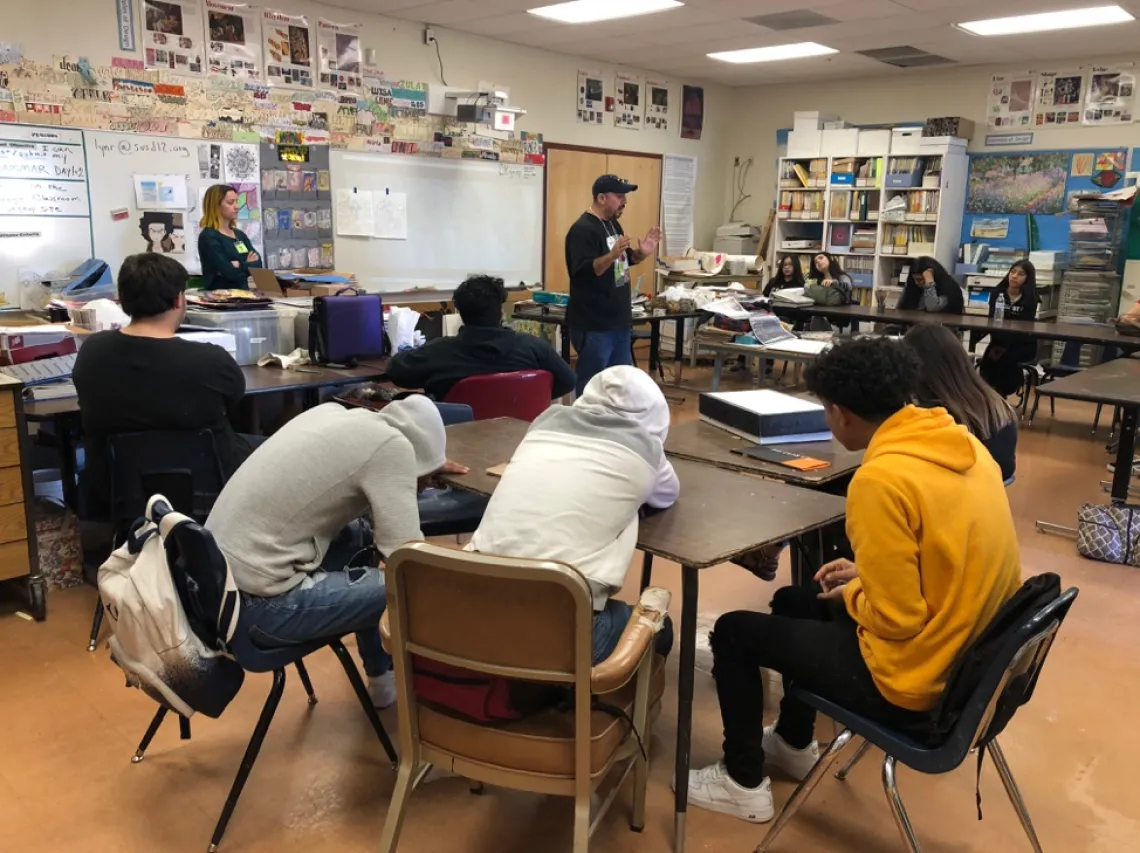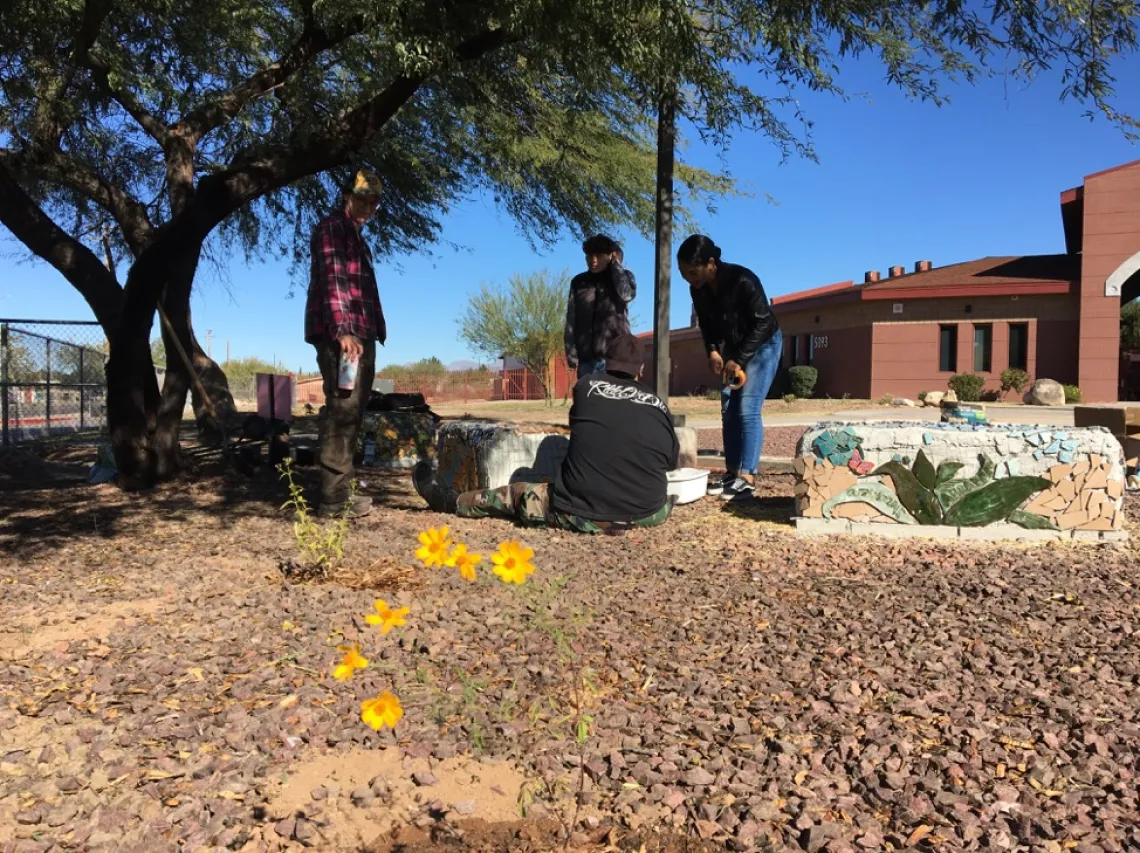By Grace Stoner
01/30/19 08:43:am
By the time that we completed the implementation of the landscape design project at Star Academic High School, I felt like I had a home at the school. From the many mornings spent viewing the school’s and students’ morning routines, trying to excite the attention of rowdy high school students, and enjoying the welcoming spirit of everyone in the school, I gained a well-formed understanding of what it was like to work at or attend this school full time, and the type of community that the school creates.
My part in this project began with the initial landscape design for the green infrastructure to be put in at Star. In spring of 2018, my studio class in the Master’s of Landscape Architecture program, part of the College of Architecture, Planning, and Landscape Architecture at the University of Arizona, was assigned the project of working with Star students and faculty to design the full Star grounds in a way that would best suit the needs of the people who use them most. The studio class was separated into two teams, one to design the front of the school and one to design the back. The requirements were to take heed of the wants and needs of Star Academic High School and to incorporate green infrastructure, especially rainwater harvesting, into the landscape. We produced extensive designs and by the end of the 2018 Spring Semester, we presented them to Star Academic High School.
Over the summer I continued to work on the project. We had received feedback from the school as well as the school district about which parts of our design were feasible and which were not. Isaac Palomo, another master’s student who worked on the original design, and I worked to develop a reimagined plan that took into account the restrictions that the school and district had made clear to us. After many iterations, Isaac produced a design that could be put into effect.
As the fall semester began, the many organizations and individuals involved in the project came together. We created teams to delineate tasks and ensure our ability to complete the project efficiently and in full. At this point, I split off into the Art & Education group, led by Mariana Rivera, in order to work on mosaic covered straw bale benches that I had proposed for the original design.
It took many weeks of planning to figure out just what we would be able to accomplish with these benches, but finally we found all the resources necessary to make it happen. Local artist Nikki Glen donated her homemade tiles, a local permaculture builder donated his time and knowledge to help us build the straw bale benches, and local muralist Carlos Valenzuela donated his time and labor to help us teach the students how to create mosaics and install them on the benches. Grant money donated to us by the Arizona-Sonora Desert Museum was used to buy pollinator plants, primarily natives, from Desert Survivors to plant around the benches. This project took so much time and collaboration, but the final result was well worth the work. The students of Star now have a lasting imprint on the school grounds and a constant reminder of all the projects they are capable of completing.



